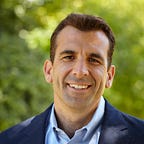When this COVID-19 wave passes, California must prioritize kids and open our schools
Amid our nine-month pandemic, political forces have swung open the doors of California’s bars, card clubs and marijuana dispensaries while we closed schools and stranded our children. Meanwhile, most nations in Western Europe prioritized keeping schools open safely, even while imposing curfews and closing businesses in recent weeks.
They got it right; we didn’t.
We now face spiking infection rates that have put 40 California counties back under the most restrictive conditions for public activity. Yet this storm, too, will pass. And when we reopen again, we must put our kids first.
When our children read the history of this pandemic, they will see how school closures have inflicted far greater harm to their health, well-being and futures than COVID-19 exposure ever could — with the greatest suffering borne by our most vulnerable.
No public health directive has commanded the closure of schools in most counties. Indeed, when many public charter and private schools opened months ago, California’s top health official found no increase in viral transmission from their reopening. Nonetheless, hundreds of local school districts — stirred by a mix of timid school boards, vocal unions and worried parents — refused to open classrooms to most students.
To be sure, any discussion about opening classrooms must start with safety. California’s public health experts concur that school re-opening is safe — assuming stabilization of the rate of community spread, and sufficient precautions taken for opening safely, including mandated protocols for testing, PPE, masking and distancing.
Studies conducted internationally and throughout the U.S. — from California to Florida to New York to data across 47 states — consistently reveal dramatically lower infection rates among children attending school than among the base population.
Children under 10 appear to have a much lower proclivity to transmit COVID-19 infection or to become ill than high school or college students. While transmission risk always exists, experts believe that children will be less likely to encounter infected people within the structured setting of a school than at home or in their neighborhoods.
What about the adults and the risks posed by infected children to vulnerable teachers or grandparents? To be sure, teachers with medical vulnerabilities should work remotely, teaching the very children whose parents choose to keep their kids home. But young children don’t transmit much to adults, either. In-class teachers fare much better than essential workers in restaurants, hospitals or salons.
Research from the UK, Netherlands, Asia and Australia accords with a recent Yale University study of 57,000 U.S. childcare workers, finding no distinction in infection rates between those providers who continued to care for children and those who stopped working.
Most importantly, school districts must give low-income parents a choice to return their kids to class. Multiple studies reveal that distance learning disadvantages less affluent students, widens the achievement gap and leaves an entire generation of poor kids behind. In California, 43% of low-income families lack reliable internet access for learning, and many students lack devices or a tech-savvy adult to help with logging in to class.
Cities try to help. In San Jose, for example, we’ve invested more than $10 million to confront the digital divide this year, providing free internet connectivity to more than 100,000 students and residents and creating learning pods for children of essential workers. Yet the need far exceeds any city’s resources, and even when we do get kids connected, many kids still don’t learn. A large fraction of students never log into their online classes, and a larger share disengages. Their social development and emotional well-being, moreover, depends on peer interaction.
Schools fulfill many critical functions for poor families, in particular. Children needing school-provided nutrition and school lunch programs, health screenings, immunizations, special needs support, counseling and mandated abuse-reporting suffer the most from closed campuses. Most importantly, open schools enable financially struggling parents to work — an acute need amid a pandemic that has impoverished so many.
We must prioritize opening elementary schools first, focusing resources — testing, PPE, staff and ventilation — on safe reopening, well before our bars and theaters. Even more, school boards must summon the political courage to support our neediest children in a manner consistent with public health experts.
Aided by teacher unions and lobbyists, adults have the loudest voices. Our struggling children should not forgive us for failing to hear theirs.
Originally published at https://www.sacbee.com on November 18, 2020.
